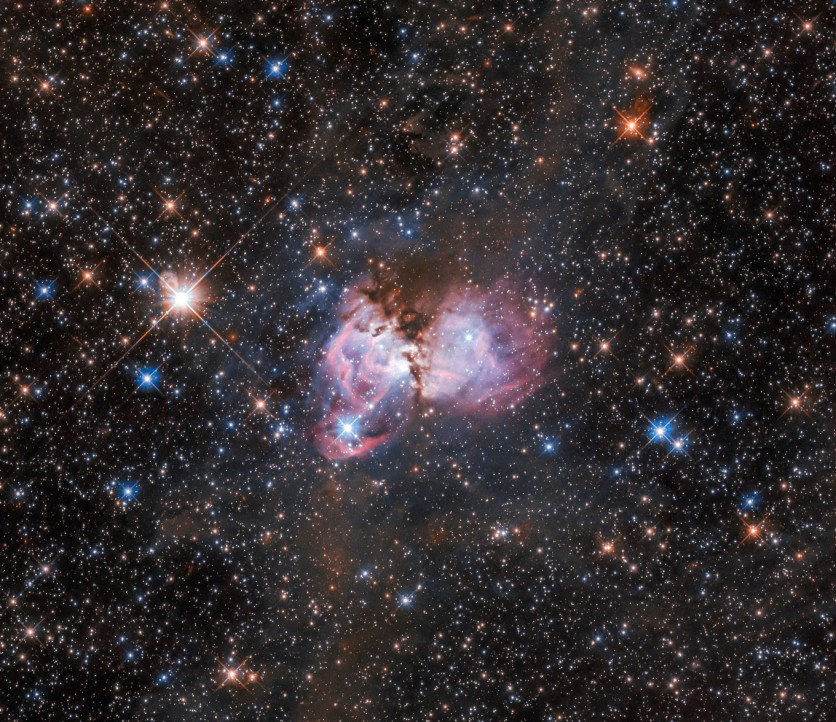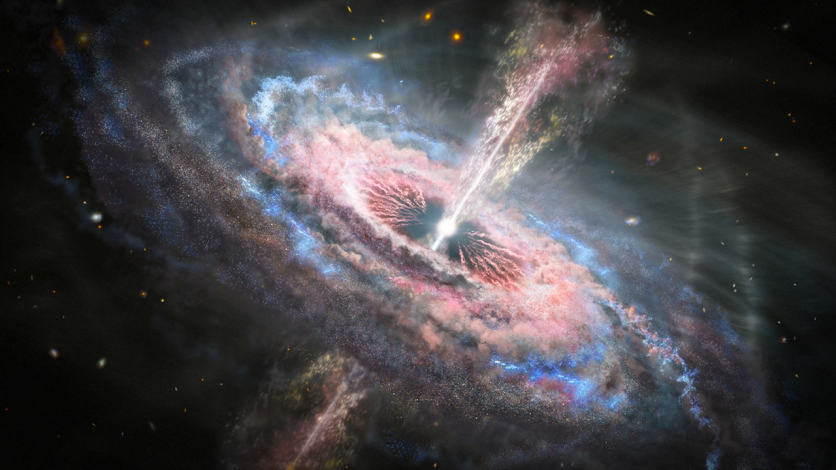NASA and ESA's Hubble Space Telescope has yet again captured two amazing events from space: the birth of massive stars and an image of quasar tsunamis that are "ripping through galaxies."
A Stellar Scene
The first image is that of LHA 120-N 150--a rather uninspiring name for a spectacular region in the outskirts of the Tarantula Nebula, the biggest known stellar nursery in the local universe, which is located at over 160,000 light-years away from a dwarf galaxy that orbits us, known as the Large Magellanic Cloud.

But, what's spectacular about LHA 120-N 150?
The photo featured a bright pink cloud in the center and surrounded by dozens of brighter, massive stars, which, according to NASA, is the "perfect laboratory to study the origins of massive stars."
Experts from NASA also wrote that theoretical models of the formation of massive stars suggest they were made from clusters of stars, but through observations, they were able to deduce that up to 10% of these massive stars were also formed in isolation.
Through the Help of the Hubble Space Telescope
Astronomers wish to learn whether the isolated stars that consist of the pink cloud and surround it were indeed formed alone, and they wish to do it with the help of the Hubble Space Telescope.
However, it can be a daunting task since young massive stars appear similar to dense clumps of dust, and LHA 120-N 150 has several dozen, which could either be stellar objects or perhaps just clumps of dust.
Nevertheless, astronomers at NASA will continue with their investigation.
Based on a report by MailOnline, the Tarantula Nebula is also known as NGC 2070 or the 30 Doradus and has a measure of 1000 light-years across. It's aptly named as the formation of bright patches that resemble that of a tarantula.
Intense Quasar Tsunamis
Meanwhile, astronomers were able to spot quasar tsunamis with the help of the Hubble Space Telescope.

While the first event captured the birth of stars, the quasar tsunamis disrupt their formation.
In a post by NASA, a team of experts was able to discover and witness the "most energetic outflows" in the universe.
These outflows come from quasars, which are extremely remote celestial objects that emit substantial amounts of energy that rip throughout its host galaxy and push material away from its center.
"No other phenomena carries more mechanical energy. Over the lifetime of 10 million years, these outflows produce a million times more energy than a gamma-ray burst," Nahum Arav, principal investigator from Virginia Tech, explained.
A Galaxy-Wide Event
The large amounts of energy can create new stars, but outflows rip through the galaxy and disrupt their formation.
According to FOX News, astronomers studied 13 different quasar outflows by measuring the speed of the gas, which is incredibly accelerated through quasar wind. They were able to do this by looking at the glowing gas and checking the spectral "fingerprints" of light.
They were able to discover the most powerful quasar tsunami as well as the outflow that accelerates much faster than the others through Hubble's ultraviolet observations.
ⓒ 2025 TECHTIMES.com All rights reserved. Do not reproduce without permission.




